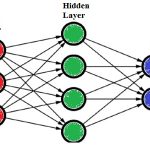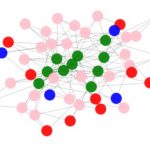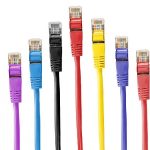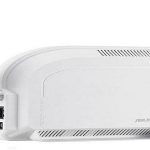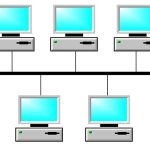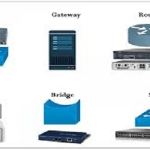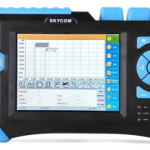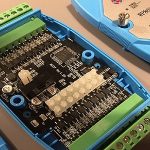The concept of the backpropagation neural network was introduced in the 1960s and later it was published by David Rumelhart, Ronald Williams, and Geoffrey Hinton in the famous 1986 paper. They explained various neural networks and concluded that network training is done through backpropagation. Backpropagation is widely used in neural network training and calculates the loss function with respect to the weights of the network. It functions with a multi-layer neural network and observes the … [Read more...]
What is Network Topology : Types & Its Working
In a computer network, network topology determines how the network is connected. There are different methods to connect a network. Network engineers have different alternatives for selecting a network topology. The different tasks in network topology management mainly include visual mapping, configuration management, monitoring of performance, but the solution is to understand your requirements for forming as well as managing the network topology in the correct method for your industry. For … [Read more...]
What is Transmission Media & Its Characteristics
In a computer network, the representation of data can be done through computers & telecommunication devices with the help of signals. The transmission of signals can be done in an electromagnetic energy form from one device to another device through the air, vacuum, and otherwise other transmission mediums. Electromagnetic energy includes voice, power, radio signals, light, gamma rays, UV light, etc. The data which is transmitted from one location to other is transmission media. In the OSI … [Read more...]
What is WiMAX Technology & Its Working
Technology like wireless broadband provides a connection with high-speed over the air. This kind of technology utilizes radio signals to send & receive data from the users directly whenever they desire it. Different wireless technologies work together like WiFI, 3G, UWB & WiMax technology to meet up customer requirements. Wireless broadband (WBA) is a point to multipoint system that is made up of subscriber equipment & base station. The base station works through an external antenna … [Read more...]
What is a Bridge in Computer Network & Its Working
In information technology, computer networks are the group of computers that are connected to perform communication and transfer the data and resources to another computer. The data stored in one computer can be accessed in another computer very easily when they are connected to only one network. These are used to communicate and share devices such as scanners, printers, and photocopiers. To provide communication or interaction between the computers/hosts and hardware on the computer network, … [Read more...]
What is Bus Topology : Working & Its Examples
In a computer network, the network topology is the geometric representation of how different devices, nodes are interconnected logically or physically to each other. There are different ways to arrange a computer network where each has pros and cons based on the requirement of your computer. Some network arrangements can provide you high security and connectivity. In a computer network, there are five types of network topologies like mesh, point to point, star, ring, bus, tree, and hybrid. From … [Read more...]
What are Network Devices : Types & Their Working
The development of computer networking started with the progress of Arpanet in the period of the ending of the 1960s and in the initial stages of the 1970s. Before the networking devices, there were computer vendor networks which are mainly constructed to associate connection between terminals and remote job entry locations with that of the mainframe. Whereas the crucial thought behind the networking was to accomplish network sharing and it was the basis in the ARPANET design. It is even more … [Read more...]
What are Network Nodes : Types & Their Working
In Data Communication Systems, a network is an interconnecting point to exchange information between various communication components connected by various communication network links. If two or more network devices are connected to each other to transfer and share information and resources within a geographical area, then it is called a network. For example, a computer network is formed with multiple computers connected to transmit, exchange, share, store data, and resources. It enables … [Read more...]
What is Optical Time-Domain Reflectometer & Its Working
For better communication to take place between two ends, there should be a proper transmission of information from one end to another. There has been a tremendous evolution of the communication systems to make the communication process faster, reliable, and safer. It has evolved from analog to digital, wired to wireless. One of the modes of communication that are highly used nowadays is Fiber Optic Communication. In this mode, using infrared ray pulses information is transmitted from one place … [Read more...]
What is Modbus : Working & Its Function Codes
In 1979, a data communication protocol called Modbus was developed by Modicon (now Schneider Electric) and it is used along with its PLCs (programmable logic controllers). It is an industrial standard protocol and it is mainly used in process and factory automation. Now it is commonly referred to as a de facto communication protocol to connect various industrial electronic components. In the electric power industry, this is used to connect a supervisory computer with RTU (remote terminal unit) … [Read more...]
